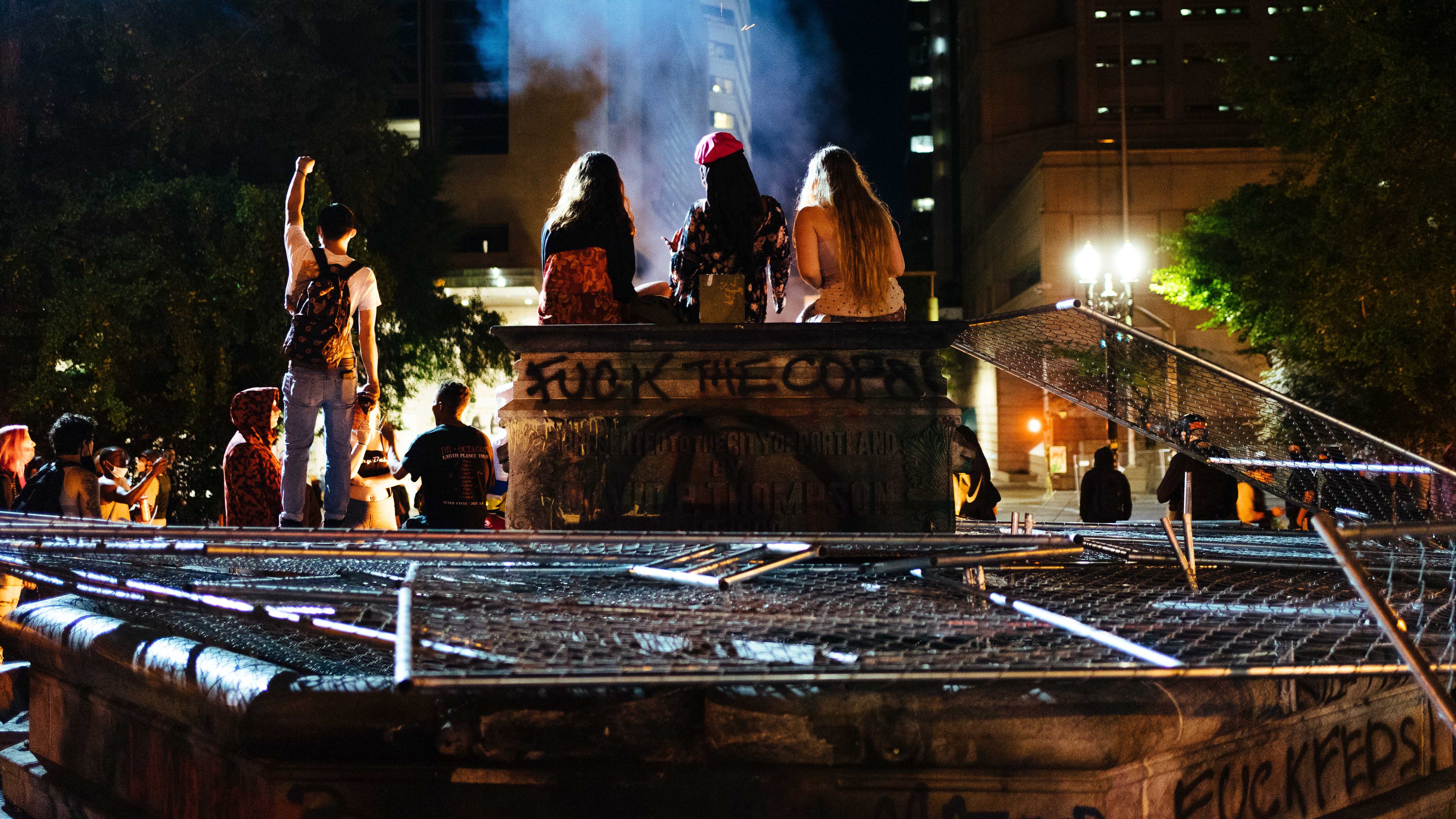The elk statue formerly located between Chapman and Lownsdale squares has become one of the more unexpected symbols of the protests against racism and police brutality in Portland.
Before it was removed in early July after protesters lit fires around its base, the statue was a gathering point for protesters, who climbed and graffitied the sculpture. The elk's fan club has only become more apparent after its removal: Protesters have replaced the statue with another artificial elk and showed up to the nightly Multnomah County Justice Center demonstrations with antlers attached to helmets.
Now, the statue, officially titled Elk, has received a public love letter. Yesterday, the Portland Architecture blog published an ode to the statue titled "The Elk statue is just fine" after visiting it in storage.
"I was motivated to seek out and assure the statue's safety after reading a series of misinformed social media posts, particularly on Facebook," writes longtime Portland architecture critic Brian Libby, the blog's author. "The suggestion was that an angry mob sought to destroy the statue as vengeance, when quite the opposite was actually true. Protesters clearly seemed to love the statue, and though it was a very bad idea to light fires at the base of it, those fires were essentially making the Elk a kind of shrine."
Libby visited Elk at Regional Arts & Culture Council's indoor storage facility, where it will remain indefinitely. The blog includes a close-up of paint flecks and notes a soot stain but concludes the elk "seemed to be in very good condition" and that its removal was premature.
Positioned on a 5-foot pedestal at the epicenter of the nightly demonstrations, Elk has literally loomed large over the protests. To protesters who regularly regrouped around the elk through clouds of tear gas, it became a symbol of resilience, and its removal became an example of the city's concern for property more than people.
Meanwhile, Portland police used the elk as an example of what the bureau views as aimless destruction and an opportunity to equate property damage with violence.
Libby's article suggests yet another meaning, positioning the elk as a paragon of unity.
"When it was removed, everybody suddenly was talking passionately," he writes. "A silent majority revealed itself. We may not have talked about it much in the past, but we all love Elk."
The article also wades into the larger cultural debate about statues.
"I'm not the first one to suggest this, but what if it's not just racists whose statues we should consider removing?" writes Libby. "What if the very practice of venerating individuals, the hagiography itself, comes into question? It's not to say that we can no longer agree on any past leaders to honor in statuary, but instead to acknowledge that people, not persons, lead change."
Read the full article, which also delves into the statue's history, here.

